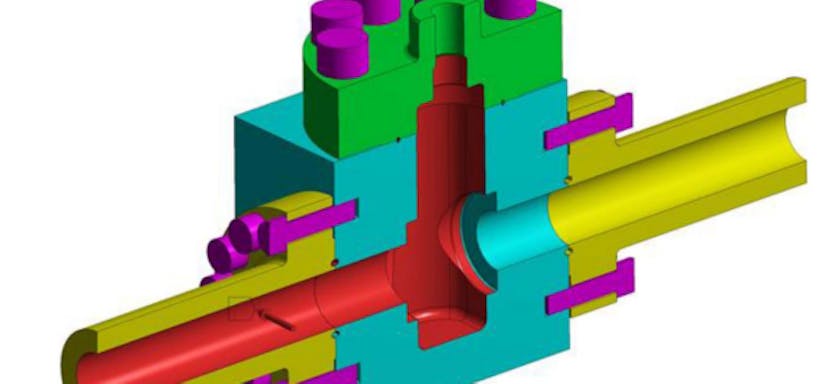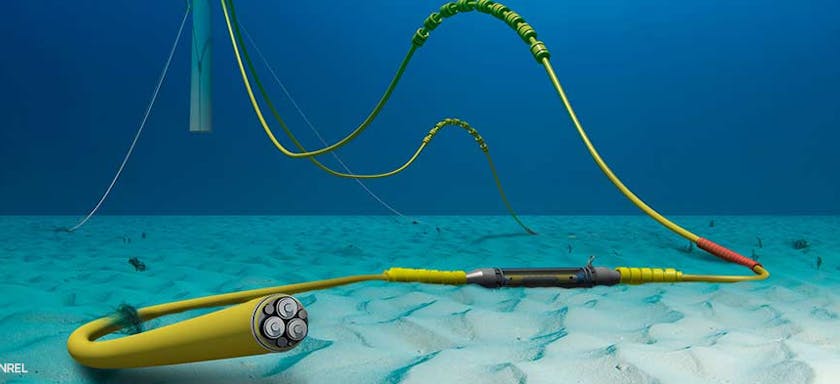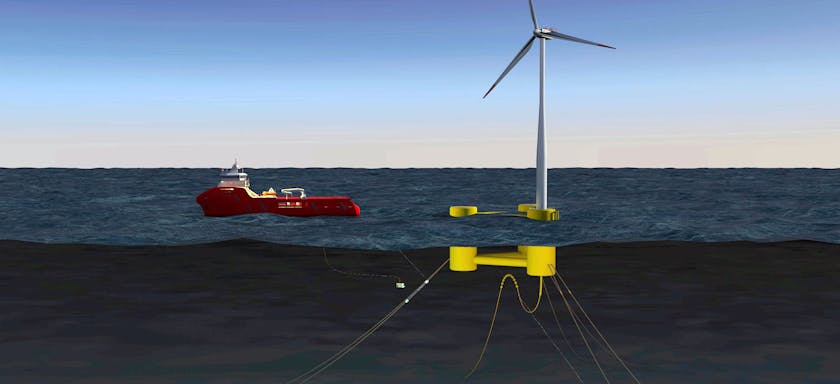Review of Hydrodynamic Coefficients for Riser Design
EVENT: OTC
2 May 2022
A literature review of experimental and computational hydrodynamic research is presented with the objective of highlighting the parameters that affect riser added mass coefficient (Ca) and drag coefficient (Cd). Typical riser analysis is conducted assuming constant values of hydrodynamic coefficients. However, depending on the flow regime, the hydrodynamic coefficients can vary significantly, and hence using the most conservative values in all analyses can result in overly conservative riser responses. For example, the appropriate coefficients for a steady current on the straked portion of a riser near the surface may be very different from those for small oscillatory motions of the riser near the Touch Down Point (TDP). Several opportunities of reducing conservatism are presented based on using variable hydrodynamic coefficient-based analysis.
Hydrodynamic coefficients are dependent on surface roughness, nature of the flow (steady vs. unsteady) and presence of Vortex Induced Vibration (VIV) suppression devices (strakes or fairings), among other factors. Relevant and important bodies of work as documented in papers, test reports or doctoral theses in the public domain are used to determine sensitivity of Cd and Ca values to Reynold's number (Re) and the Keulegan Carpenter (Kc) number. Steady and unsteady flows are treated separately, as are unstraked (bare) and straked pipes.
The practice of using constant values of hydrodynamic coefficients in riser analysis is simplistic and often overly conservative. A common practice is to use Cd of 0.7 in bare pipe fatigue analysis as a lower bound. Several tests have demonstrated that Cd can in fact lie in the 1 – 2 range depending on Kc number and Re number. Higher Cd is associated with higher hydrodynamic damping and considerable improvement in TDP fatigue life prediction. Similarly, strake Cd's in low Kc flow have also been observed to be higher than what is used in typical riser analysis, sometimes by a factor of 3 or more. On the other hand, higher Ca values can lead to higher fatigue damage prediction. The correct input of Ca is thus essential to avoid being under conservative. Cavariations with respect to Kc number for both bare and straked pipes are provided in this paper.
A refined approach to application of hydrodynamic coefficients in riser analysis is necessary to avoid over or under conservatism. This is especially important in life extension studies where there is little room for additional conservatism. The riser design codes typically do not provide an in-depth review of hydrodynamic coefficients based on factors such as roughness, nature of flow or pipe cross section. This review paper of fundamental experimental and computational work on hydrodynamic parameters is a useful reference to be used in design and life extension assessments.
Authors

Dhyan Deka
Senior Engineering Specialist

About
Dhyan has over 17 years of experience in project management and technical leadership of riser and conductor engineering projects. He has led numerous design, integrity management and life extension projects both as the owner’s engineer as well as the verification agent. Dhyan is the project manager of the two premier riser joint industry projects – STREAM and TRACS JIP.
As one of the principal engineers in the Houston office, Dhyan’s focus is the expansion of our riser and umbilical life extension offering, both locally and abroad. Dhyan has a Bachelor’s degree from IIT Guwahati and a Master’s degree from the Ohio State University, both in Mechanical Engineering.
Insights

Mike Campbell
Global Director, USA

Mike Campbell
Global Director, USA
About
Mike is a Global Director and vice president of 2H’s Houston office, where he is responsible for the management of the engineering group. Mike has over 22 years of experience dedicated to riser engineering, ranging from conceptual design and feasibility to detailed design, installation, monitoring and operational integrity management for all types of riser systems and subsea equipment. He has authored numerous technical publications including fatigue analysis methods and the use of field measurements to benchmark and improve design tools. Mike is a graduate of the University of Sheffield, UK, and has a bachelor’s degree in mathematics and physics.
Stephen Hodges
Shell
Ilkay Darilmaz
Shell








